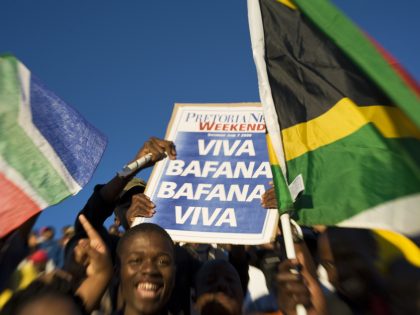'The Invader'
The dramatic opening scene of Belgian filmmaker and artist Nicolas Provost’s new feature film, “The Invader,” is set on one of the beaches of the Italian resort island Lampedusa, which has become a primary European entry point for undocumented African migrants into Europe.
Halfway into this video interview at the Venice film festival, Provost talks about why he opens the film with this scene — “I wanted it to be like a superficial commercial for Europe.” Here’s The Hollywood Reporter‘s review of the film which focuses on the travails of an African migrant in Brussels:
Slickly accomplished and anchored by an outstanding central performance by the imposing Issaka Sawadogo, this offbeat picture will be a surefire talking point at festivals (…). Art-house play in Francophone territories beckons for this film punctuated with frank nudity and resolutely unglamorized violence.
Much of the latter is meted out protagonist Amadou (Sawadogo), a swaggering bull of a man who makes his way from an unspecified African country to work illegally in Europe. He finds a tough construction job in Brussels, which involves wielding an enormous drill, the first of several instances where Provost deploys overt phallic imagery with semi-ironic directness.
Amadou is a man on the make, both financial and sexually, so it isn’t long before he’s engaged in a steamy affair with a sophisticated, white European woman – Stefania Rocca’s Agnès. When this liaison turns sour, Amadou’s fortunes quickly deteriorate. A chap who has previously been a potentially model EU citizen – hard-working, caring, conscientious, intelligent, resourceful – spirals into bloodshed and murder. Whether this change involves some revelation of Amadou’s true savagery, or whether he is haplessly driven to desperate acts by capitalist Europe’s callous cruelty, is a matter for debate.”



















